Articles
Sometimes I do my own photography for an article, sometimes not. All the photos here, however, are mine.
A THANKSGIVING PASTA INSPIRED BY ROMAN JEWS
TABLET MAGAZINE, November 27, 2013
Calvin Trillin’s favorite Thanksgiving dish, Spaghetti alla Carbonara, gets a kosher makeover – the first new development in ages in the long and fruitful culinary relationship between Roman Jews and their neighbors. READ MORE
A TASTE OF SPAIN AT THE SEDER
TABLET Magazine, March 22, 2013
Chicken Marbella, the great Silver Palate Cookbook dish that became a staple of trendy dinner parties in the 80’s, has now become a mainstay recipe for Passover. READ MORE
One More Bud
Hadassah Magazine, January 2009
My father’s name was Irwin Donald Schoen. Hardly anyone knew that, however. He went by “Bud” or “I.D.” – which worked well since interior design was not merely how he earned a living; it was his calling. Back in the days when Midcentury Modern was simply modern, his furniture store was the first to bring the likes of Charles and Ray Eames, Isamu Noguchi, Russel Wright and George Nelson to Allentown, Pennsylvania. Today, the family joke (or the joke on our family) is that if we still had the stuff he was selling back then we would be gazillionaires. “But who knew?” as someone always says. My father probably did, but for a material guy, he let a lot of things slip through his fingers... READ MORE
A Refuge on Pennsylvania’s Flyway
The New York Times Travel Section, July 11, 2004
Nearly every October of my childhood, my parents took my sister and me to Hawk Mountain. From the broad rock ledges where the woods open onto huge views of endless valley and sky, we’d scan the horizon, spotting, if we were lucky, a few of the 20,000-some hawks, falcons, eagles, ospreys and other raptors that soar down this migratory flyway in eastern Pennsylvania every autumn on their annual trip south. “This is about as close to heaven as you can get!” my mother always said. And to think it was only a short drive from our house in Allentown – 35 minutes away, to be exact, in the heart of Berks County on the Kittaninny Ridge of the Pennsylvania Appalachians... READ MORE
In Parma, Violets are in the Air
The New York Times Travel Section, February 20, 2000
On a Sunday afternoon in Parma...in the cool depths of the Gran Caffé Orientale, I notice, lined up in an antique mirrored cabinet, fancy bottles filled with a mauve liquid that the waiter tells me is Rosolio alla Viola. He opens the bottle and pours a generous dollop into a wine glass, explaining that this was created early in the 18th century for discerning ladies. It tastes exactly as the ingredients on its label – grappa, honey, sugar and essence of violet – would suggest. In winter, the waiter assures me, it’s wonderful with marrons glaces...Soon I am feeling overwhelmed with my good fortune. Who would have thought that only an hour after arriving in Parma I would have discovered such a delightful and unexpected aspect of my reason for coming here, which was to investigate the cult of the Parma violet...I wanted especially to find out about Violetta di Parma, the perfume that has been made by the local firm Borsari for more than a century... READ MORE
A Monument’s Minder
The New York Times Travel Section, June 27, 2004
It’s a chilly May evening, I’m alone in Rome and I’ve come to the Pantheon to comfort myself, to bask in the positivita, as they say in Italy. Hundreds of other people mill around the echoing rotunda, stopping to pay respects at the tombs of King Vittorio Emanuele II, King Umberto I, Queen Margherita di Savoia and Raphael, “the prince of painters”, but mostly staring up, way up, to marvel at the vastness of the dome and watch the disk of fading daylight visible through its wide-open oculus. Suddenly a small woman with short, copper-colored hair zips through the crowd and disappears into an alcove next to the main altar. Seconds later the lights go out. A bell rings. The copper-haired woman reappears. “Prego,” she says loudly and clearly, urging the crowd toward the great doors. “Prego, si chiude,” closing time, everyone out. I follow her, fascinated...The Big Questions that the Pantheon always inspires (for instance, how it’s managed to survive in its present form for nearly 1900 years of fires,earthquakes, lightning, floods and barbarians, not to mention Pope Urban VIII’s renewal projects) have given way to smaller yet still pressing concerns, beginning with: Who cleans up in here?... READ MORE
In the Battle of the Sexes, This Word is a Weapon
The New York Times, The Week in Review, July 25, 1999
The London debut of “Swetnam the Woman-Hater” may not have been the biggest event of 1618, but it had lasting impact. According to the Oxford English Dictionary, this play introduced the word misogynist into the English language. The word caught on immediately, which makes sense, since there have always been men who have despised women. But there have always been women who have despised men. Why, then, wasn’t it until 1946 that an equivalent word for hostility toward males appeared? And why, once the word misandry surfaced (in “Scrutiny”, a defunct British journal of literary criticism), did it sink quickly into near oblivion?... READ MORE
A Woman’s Power Tool: High Heels
The New York Times, The Week in Review, March 5, 2000
This is, in fashion parlance, a major shoe moment. There are shoe refrigerator magnets, charm bracelets, earrings, key rings and cards – and that’s in the Metropolitan Museum of Art’s gift shops alone. Over the past three years, no fewer than a dozen books on shoes have appeared. And most of the shoe effigies and lore reflect what’s afoot – namely, high heels, the more risque the better. Women are buying them as never before. And wearing them... READ MORE
An American Gets a Hero’s Welcome in Rome
Wall Street Journal – May 2, 2000
The Italian publication of Harold Bloom’s new book, “How to Read and Why”, could not have come on a more auspicious date: March 8. All over Rome vendors were selling bouquets of brilliant yellow mimosas because it was International Women’s Day. But in the early evening, as Mr. Bloom—renowned for his fierce battles against the teaching of politically correct but aesthetically challenged literature, and author of 24 books, including the best-selling “The Western Canon” and “Shakespeare: The Invention of the Human” – received an honorary degree from the University of Rome, it truly seemed as if Rome was in bloom because Bloom was in Rome. How clever of Rizzoli, his Italian publisher, to have capitalized on his presence here by publishing his book...in this blaze of glorious mimosas. Two days before, a jet-lagged Mr. Bloom was somewhat chagrined to find himself in a blank-walled office in the building which Rizzoli was in the process of vacating. He stared at an empty book-case (a depressing sight for a man who owns upwards of 30,000 books). Couldn’t he have been interviewed by journalists from every major newspaper in Italy as he sat in the Piazza Navona, gazing upon the Bernini fountain and its recumbent river gods?... READ MORE
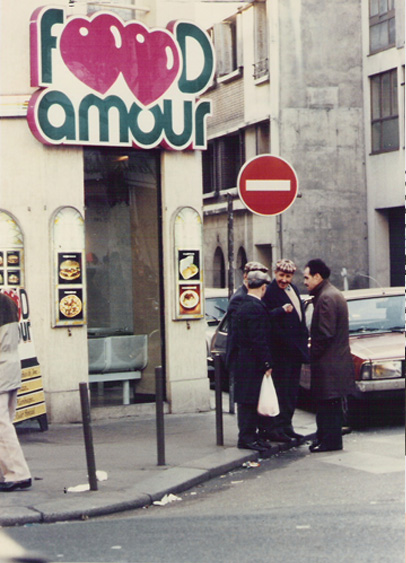 Paris, December 1985
Paris, December 1985
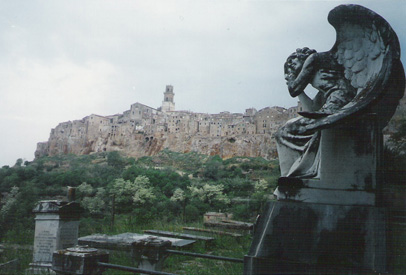 View of Pitigliano from the Jewish cemetery
View of Pitigliano from the Jewish cemetery
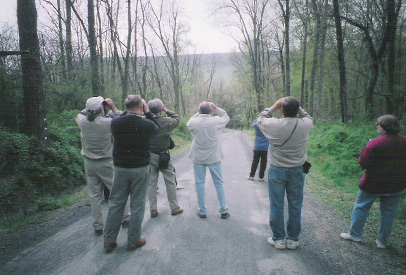 from A Refuge on Pennsylvania's Flyaway: Hoping for hawks (or something!)
from A Refuge on Pennsylvania's Flyaway: Hoping for hawks (or something!)
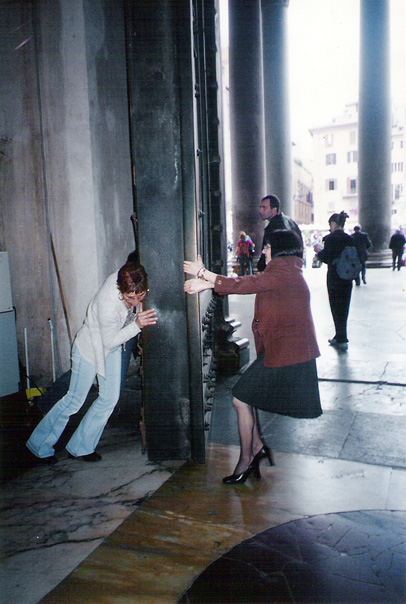 from A Monument's Minder
from A Monument's Minder
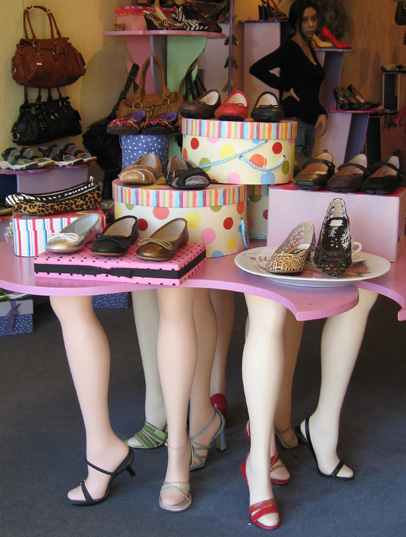 from A Woman’s Power Tool: High Heels
from A Woman’s Power Tool: High Heels
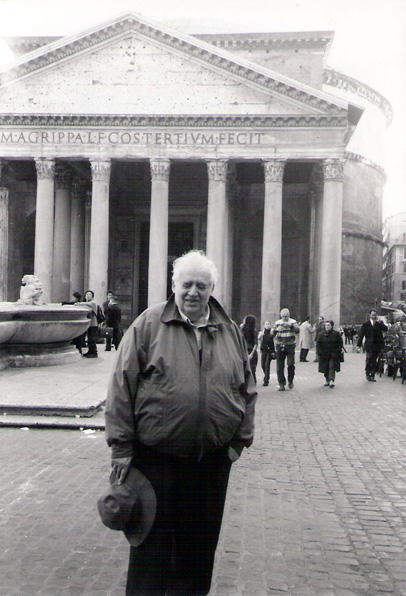 from An American Gets a Hero’s Welcome in Rome
from An American Gets a Hero’s Welcome in Rome